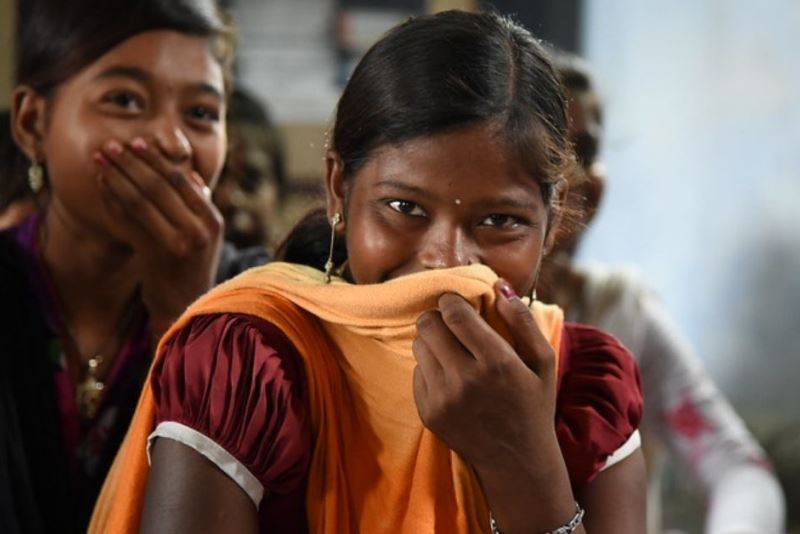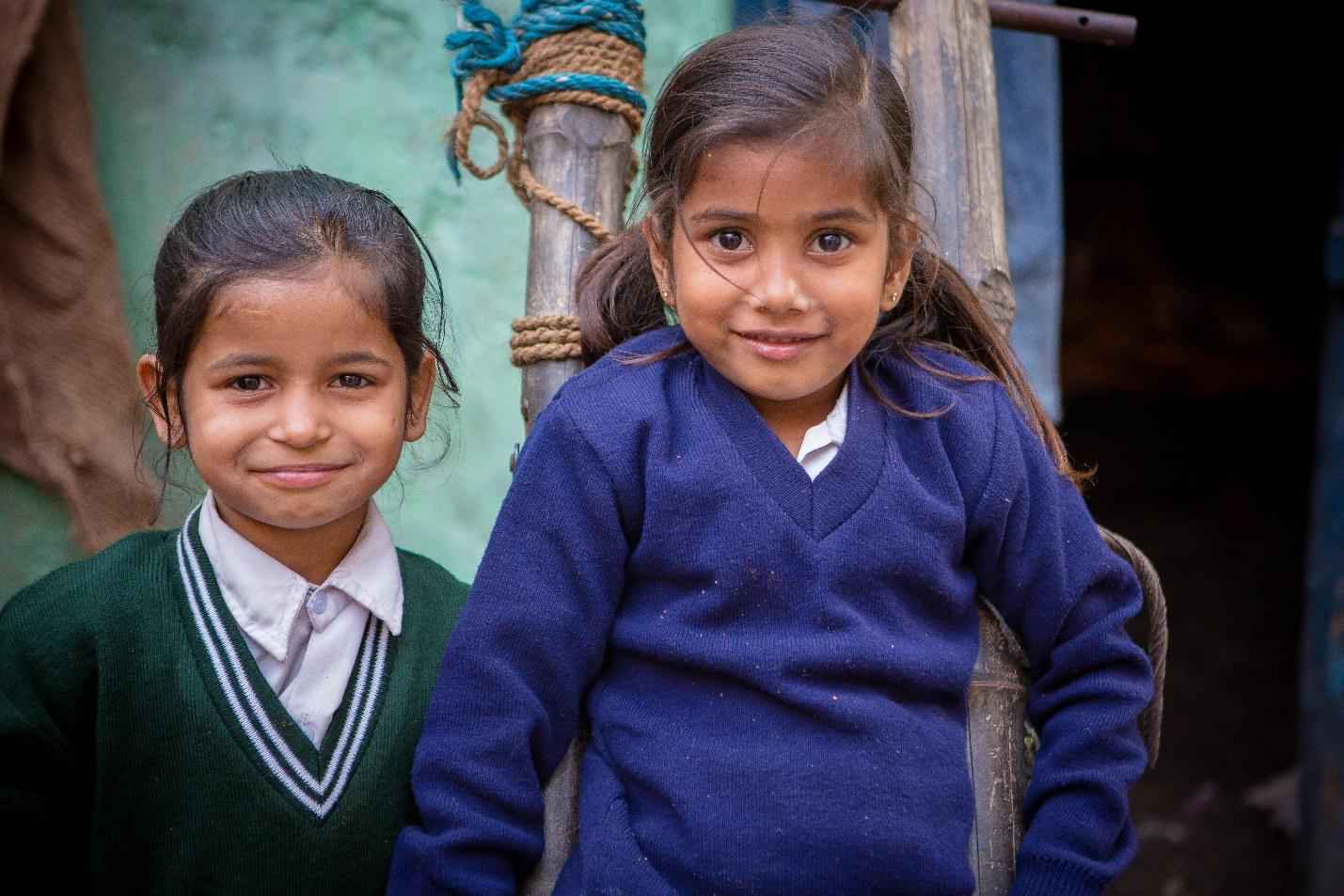
This New Year, Help Protect Girls from Forced Child Marriage
31st December is an occasion that is celebrated with much excitement. After all, it is the eve of New Year’s – the end of a wholesome year an....
Read MoreChild marriage still affects millions of girls in India, robbing them of education, health, and safety. The causes of child marriage in India include poverty, lack of education, harmful traditions, and gender inequality. These causes of child marriage vary by region, with states like Bihar and Rajasthan seeing higher rates. CRY India tackles the issue through education, awareness, policy advocacy, and community action to protect and empower children.
Child marriage, a deep-rooted social issue, continues to prevail in many parts of the world, including India. Despite adequate awareness campaigns and significant progress in various sectors, the practice of child marriage remains a major concern, affecting millions of young lives and hindering their potential for a better future. At CRY, we have been advocating for the rights of underprivileged children in India and relentlessly aiding in their physical, psychological, educational and mental acumen growth with our multidisciplinary campaigns.

In this blog, we will explore the causes child marriage and effects of early marriage, delve into the marriage system in India, and shed light on the crucial initiatives undertaken by NGOs and the government to combat this detrimental practice.
According to UNICEF (2014), India accounts for one in every three child brides worldwide. Child marriage in India is one of the most prevalent forms of exploitation and abuse, particularly in the case of girls under the age of 18. The prevalence of this practise varies throughout all Indian states, although it is most prevalent in Rajasthan, Madhya Pradesh, Bihar, Uttar Pradesh, Jharkhand, Haryana, Karnataka, Andhra Pradesh, and Tamil Nadu. CRY, the most trusted NGO in India, aims to work with communities to abolish the practice and make sure children go to school rather than get married off or have children of their own at such a tender age.
The rampant problem of child marriage and early childbirth robs millions of young girls from marginalised communities of their dreams and potential. Both urban and rural sections of the nation still practise these two social evils. As more young girls are married off at an early age to ease the financial burden on the family, the problem is only getting worse.
According to Census 2011, there are 12 million married children in India of which 8.9 million are girls. Marriage at such an impressionable age deprives children of their fundamental rights, including protection from abuse and exploitation, access to regular education, and proper health and nutrition. These children drop out and are eventually trapped in the vicious cycle of poverty that is detrimental to their healthy development. The practice of child marriage violates the fundamental birth rights of children; hence, it must be stopped and children's rights must be protected.
Also Read: What is POCSO?
Early marriage problems are often rooted in complex societal factors, including:
Traditional norms and cultural beliefs play a significant role in perpetuating child marriage. In rural areas, the practice is often seen as a way to preserve traditions and maintain social status.
Families living in poverty might view child marriage as a means to reduce the financial burden, as marrying off a daughter at an early age is perceived to be one less mouth to feed.
Deep-rooted gender discrimination and limited opportunities for girls contribute to child marriage. In some cases, girls are seen as a burden, and marrying them off at a young age is believed to secure their future.
Limited access to education, especially for girls, increases the likelihood of child marriage. Illiterate parents may not understand the benefits of educating girls and prioritize early marriage instead.
Child brides are at a higher risk of experiencing domestic violence and abuse within their marital homes due to their vulnerable status.
Forced into adult responsibilities at a young age, child brides are more susceptible to depression, anxiety, and low self-esteem.
Child marriage remains a significant concern in India, affecting millions of young girls and boys. While the practice has declined over the years, it continues to have profound and lasting impacts on those involved. Understanding the effects and causes of child marriage in India is crucial for developing effective strategies to combat this issue. The causes of child marriage have severe and lasting consequences for young girls, adversely affecting their health, education, and overall well-being.
Early marriage frequently results in early pregnancies, which can pose significant health risks. Complications during childbirth are more likely among young mothers, endangering both the mother and the child. In India, approximately 23% of girls are married before the age of 18, making them more susceptible to maternal health complications (Source: UNICEF, 2023).
Girls who marry early may experience feelings of isolation and depression. The transition from childhood to marriage can be overwhelming, leading to mental health challenges that persist into adulthood. The lack of social support and the abrupt lifestyle change contribute to these psychological issues.
Child marriage often results in girls discontinuing their education, limiting their future employment opportunities. The absence of education continues the cycle of poverty and dependence. Studies indicate that girls who marry early are less likely to complete their education, thereby reducing their chances of securing stable employment. Fewer than 2 in 10 married girls remain in school after marriage (Source: UNICEF, 2023).
Early marriage can place girls in situations where they are more vulnerable to domestic violence. The power dynamics in such relationships often favour the older partner, leading to potential abuse. The lack of financial independence and social support systems further exacerbates this risk.
Recognizing the severity of the issue, the Indian government has taken significant steps to eradicate child marriage:
a. The Prohibition of Child Marriage Act (2006) sets the legal age for marriage at 18 for girls and 21 for boys. It also stipulates strict penalties for those involved in arranging child marriages.
b. Beti Bachao, Beti Padhao (Save the Girl Child, Educate the Girl Child) is a government scheme launched to address gender imbalance and promote the education of girls.
c. The Integrated Child Development Services (ICDS) program aims to improve the health and nutrition of children and protect their rights.
Communities and non-governmental organisations (NGOs) play a pivotal role in preventing child marriage by implementing various strategies.
It is essential to educate local communities about the harmful effects of child marriage. Awareness campaigns can challenge traditional norms and encourage families to delay marriage until the child reaches adulthood.
Organisations like CRY India have been deeply involved in conducting campaigns to combat child marriage. In our project areas, CRY has protected 58,427 adolescent girls from entering into child marriage.
Giving girls access to education and vocational training equips them with skills and knowledge, enabling them to make informed decisions about their futures and reducing the likelihood of early marriage. Education empowers girls to challenge societal norms and aspire for better opportunities.
NGOs can work alongside local authorities and policymakers to strengthen laws against child marriage and ensure their effective implementation. This collaboration can lead to systemic changes that protect children's rights.
Child Rights and You (CRY) is a non-governmental organisation dedicated to ensuring every child's right to a childhood free from exploitation. CRY works with local communities to address the root causes of child marriage and implement preventive measures.
CRY's approach includes:
Through these efforts, CRY aims to create an environment where children can live, learn, grow, and play without the threat of early marriage. CRY India plays a vital role in this endeavour, working tirelessly to protect children's rights and promote their well-being.
At CRY, we have been working to combat this social evil by conducting awareness drives for adolescent girls, connecting parents with MNREGA job opportunities, organizing home visits to high-risk homes, educating Panchayat leaders and VCPC members about the deep-rooted effects of child marriage, tracking potential cases of impending child marriages and getting help from the police to stop them, and making sure that girls can return to school after the lockdown. In the CRY project areas in 2021–2022, CRY prevented 58,427 teenage girls between the ages of 11 and 18 from getting married as children.
Donate to CRY, the best NGO in India, to help stop child marriage. Donate to CRY now and get a 50% tax exemption on your donation!
Child marriage often leads to early pregnancies, which can result in health complications due to the young age of the mother. These complications can endanger both the mother and the child.
Girls who marry early may experience feelings of isolation, depression, and anxiety. The abrupt transition from childhood to marriage can lead to mental health challenges that persist into adulthood. The lack of social support and the abrupt lifestyle change contribute to these psychological issues.
The Indian government has enacted the Prohibition of Child Marriage Act 2006, which makes child marriage illegal. Additionally, various state governments have introduced conditional cash transfer programmes, such as Apni Beti Apna Dhan, to delay underage marriages.
Breaking the cycle of child marriage requires a multi-faceted approach, including strengthening and enforcing laws against child marriage, promoting education and skill development for girls, and challenging societal norms that perpetuate the practice. Collaboration between governments, NGOs, and communities is essential for lasting change.
There are many causes of child marriage such as poverty, gender inequality, cultural traditions, and lack of education. Families may marry off daughters to reduce financial burdens or adhere to societal norms, while limited educational opportunities and entrenched gender biases further perpetuate the practice.